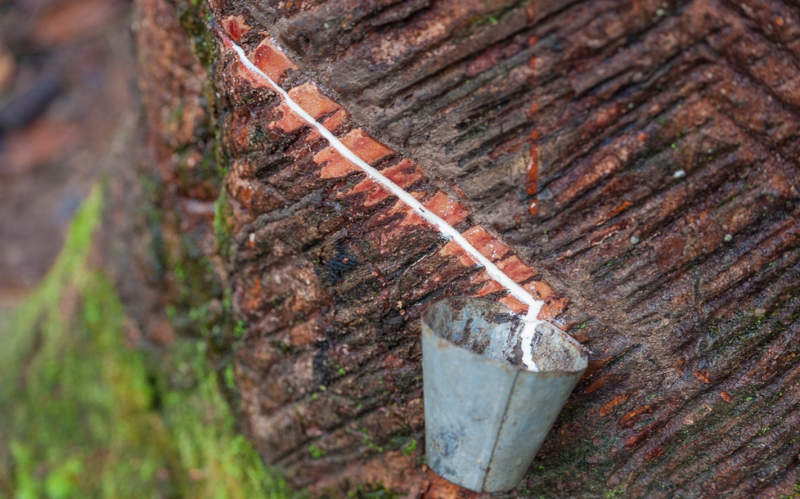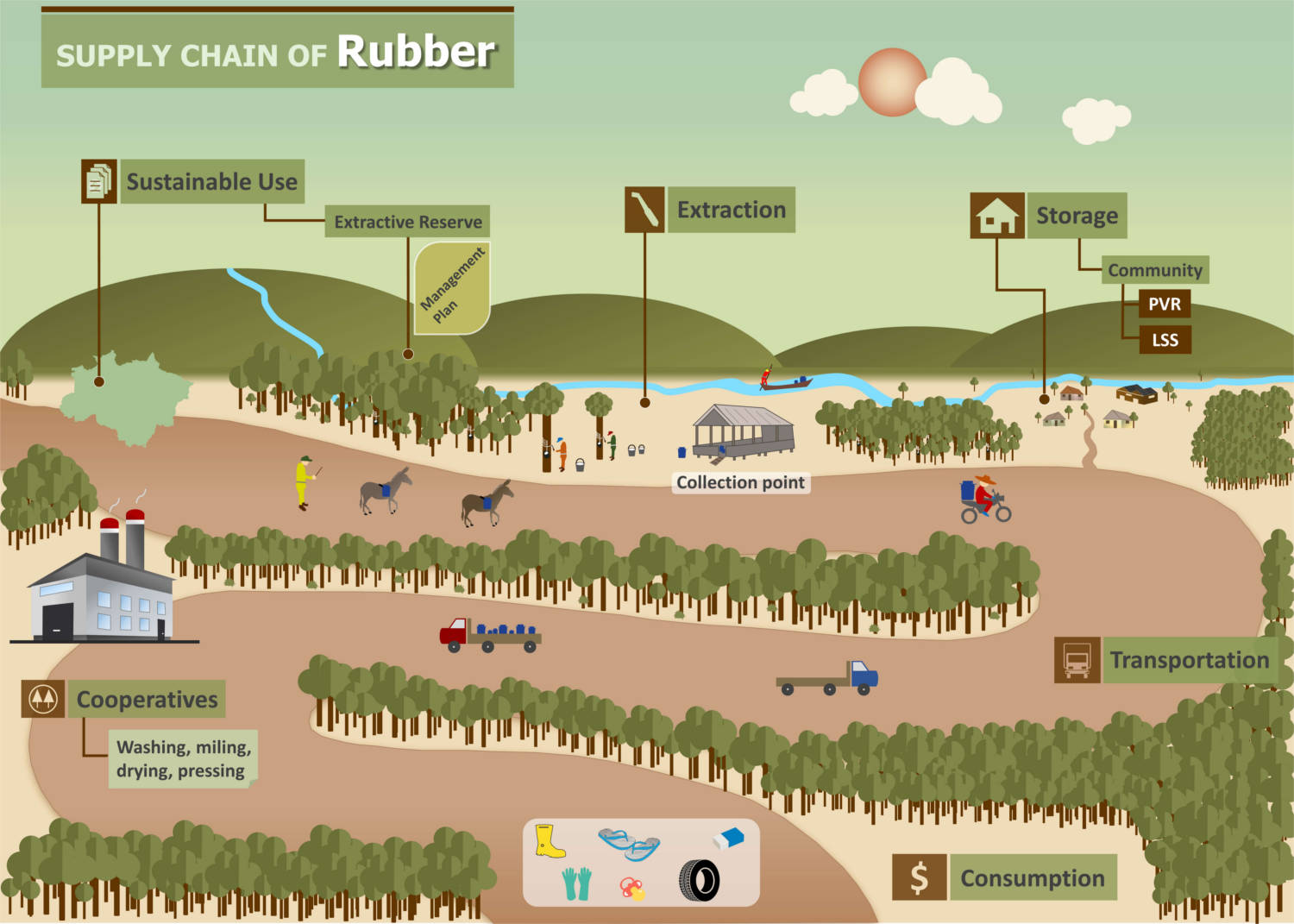Hevea brasiliensis is the main source of natural rubber in the world. Although a versatile and widely used raw material, the rubber market is very dependent on tires for the automobile industry, which consumes 80 to 90% of the rubber extracted in Brazil [1]. Natural rubber can be gathered in native forests or in plantations, which have very different production systems and value chains. In the Amazon, the prevalent system is traditional rubber tapping in native forests, which still provides an important income source for 5 to 10 thousand families, mainly located in Acre and Amazonas states [2]. However the extraction volume has steadily declined in the past couple decades.
Rubber in the Brazilian Amazon is collected for the following products:
• Pressed Virgin Rubber (PVR): PVR is the raw material of GEB (Granulado Escuro Brasileiro) used in the automotive industry. This product represents 80 to 90 % of the market shares in the Brazilian Amazon.
• Liquid Smoked Sheet (LSS): LSS technology, which is coagulated by Pyroligneous acid, was developed by the department of chemistry at the Federal University of Brasilia (UNB) to generate thin sheets of pure rubber. This product has a small market share (around 5%) but has been promoted on the basis of national and international community-industry partnerships.
• Liquid Latex (LL): LL is used to produce toys and other objects, and is the main source of raw material to the NATEX condom factory—to help diversify the rubber production chain, the Acre State Government set up a condom factory in Xapurí in 2005.
We model economic returns for PVR and, in addition, assess the LSS and LL productive systems in Acre. Our results show that rubber extraction is not profitable in areas of low productivity. In areas with yields above the mean (yields ≥ 3.53 kg/ha/year), and in the presence of governmental subsidies, rubber rents can average US$ 0.56±0.7 ha/year. In the southwest part of the biome, including the state of Acre and the southwest part of the state of Amazonas, rents can reach as high as US$ 6.13 ha/year.
1. SEAPROF – Secretaria Extensão Agroflorestal e Produção Familiar. Diagnóstico da cadeia de valor da borracha. 2014.
2. IBGE – Instituto Brasileiro de Geografia e Estatística. Produção da Extração Vegetal e da Silvicultura. 2015. Available from: www.ibge.gov.br/home/estatistica/economia/pevs/2013/default.sht.


Methodology
[…]
Raimundo Mendes de Barros, known as “Raimundão”, was born and raised in Xapurí, Acre. He has dedicated his entire life to rubber tapping and Brazil nut collection. He supports his cousin’s (Chico Mendes) cause in favor of forest conservation and sustainable use of natural resources. Today, at 70 years old, he recalls the achievements of their struggle to maintain the extractivists’ livelihoods.
